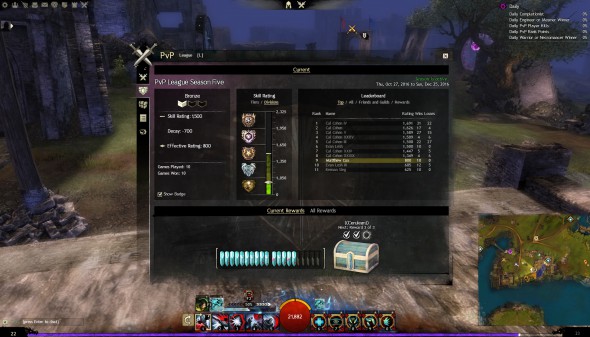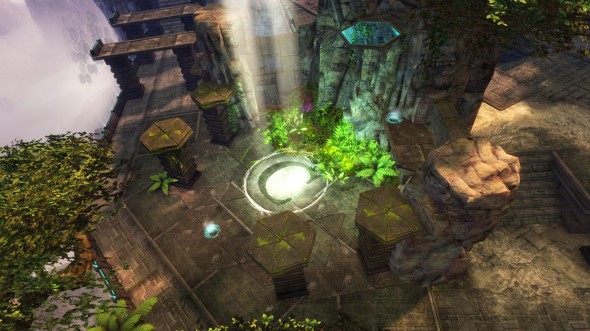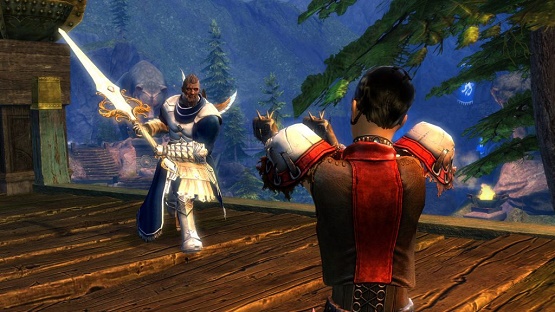
Guild Wars 2 fans had a strong inkling that some significant, much-needed changes would be a large part of the PvP League’s season 5 launch, and we certainly haven’t been disappointed. ArenaNet has made sizeable changes to how PvP players earn rewards and are matched up against one another with the main goal of making faster, more accurate matches that better reward those who engage with the league. Season 5 really seeks to challenge and stretch PvPers as they climb the rankings, engage as many players as possible for the entirety of the season, and open up the competitive playing field much more than ever before.
In this edition of Flameseeker Chronicles, I’ll outline the changes you’ll see if you engage with this PvP season and help you understand how the overhaul might impact your game. It’s early days and I don’t hope to fully evaluate how well the changes will meet the aims set by ArenaNet, but I’ll also give you my two cents on the improvements as well.
Solo/duo-only queuing
Season 5 is the first season in which we’ll see queuing capped to solo player and duos in an effort to maintain fairness. This was a hotly debated and community polled change that players have been expecting: I’m on the pro-side of the queuing debate because I believe capping to duos will allow the matches to reach a more even overall balance without having to factor in larger, more coordinated groups that will join such games together to strengthen each other’s ranking through more cohesive play. It makes sense to me since Guild Wars 2 is a game that prioritises more freeform playstyles that do not penalise the solo or casual player, though I can see how members of PvP focused guilds might feel shortchanged by the new system.
The vote was overwhelmingly in favour of solo and duo queuing simply because of the coordinated groups that were able to farm groups compiled by solo players. I am not a hardcore PvPer and haven’t encountered this sort of behaviour in my casual PvP ventures, but I imagine it could become more of a problem for those who ascend the ranks. No matter the likelihood, if players perceive it to have been an issue and have voted to try something else, I’m glad ArenaNet has given that grievance airspace.
 Matchmaking has been entirely overhauled
Matchmaking has been entirely overhauled
A player’s internal matchmaking rating paired with the old pip system used to define which players could be matched together in a league match, so players had to be within 15 pips of one another in order to be matched together. Those pips were also rewards for PvPing, however, and the correlation between reward and ranking currency caused complex weighting and priority problems that needed solving. Separating the pips out means that MMR springs to the fore for matching purposes, which in turn widens the pool of players who can be matched with one another and reduces queue times since the system no longer bands players together by pips as well.
I really appreciate this separation of reward currency from matchmaking and do feel as though matching will be faster and far less restrictive on players who don’t always play together and might have previously fallen out of that maximum 15-pip gap despite being of similar skill. While I hope that PvP populations only increase over time as these improvements roll out and continue, but having a system in place that pools together as many people as it can without jeopardising balance and fairness can only be a good thing should populations decrease and the pool of available teammates and opponents becomes smaller.
 Visible skill ratings
Visible skill ratings
Having a visible metric that directly represents PvP skill is a long-requested move that should have happened much sooner in my opinion. The new Skill Rating will directly translate to traditional colour-coded ranks, which in this season have been named Bronze, Silver, Gold, Platinum, and finally Legendary, and these divisions will determine which badge you can show on your nameplate and also how players earn rewards. The visible and comparable Skill Rating required the implementation of several other critical mechanics in order to make it actually function as a fair measure of PvP prowess, including measures to prevent players from taking long idle breaks once they reach their desired rank and also measures to rebalance the playing field at the start of each season from here on out.
A leaderboard will hold the top 250 PvP players of the season and those players will then be eligible to fight off for exclusive titles. For this reason, I can absolutely see how important the new decay mechanics are to maintaining a high calibre leaderboard, especially when the answer to fighting decay is to play more league matches. You can no longer be “done” with a season, which feels far more realistic to me since you can no longer just park in a sweet spot and ride out the rest of a season as if its rankings is a simple linear bar to grind and complete. This system is far closer to other PvP systems players might be familiar with, so players won’t have a hard time adapting to the latest system.
The start-of-season reset will be interesting: The first while will be very volatile indeed as players all partake in ten placement matches before their rating initialises, forming the base point from which each player will commence at the season’s beginning. Ten matches should be enough of a spread to gauge your basic rank for all but the most unlucky players, so I’m hoping this works out well.
Personal score overhaul and new reward system
The personal score system never really made sense to me in how it was implemented in Guild Wars 2 and I far rather see raw stats, so I found the move away from the personal stats in favour of team and raw metrics an interesting one. I like the stat groupings given, particularly Offense and Defense as trackers for your overall contribution to the team’s efforts in both areas. On top of the shifting emphasis away from personal scores, you’ll notice that there is no longer backwards progression on those pips and the number required per tier has also been rebalanced. With losses adding a small number of pips to your pile, every match has some value to your season, so I’m hoping that players will be more likely to tough out bad patches and persist throughout the season. In terms of the actual goodies available, ascended weapons and the Ardent Glorious armour set are available to purchase with a new currency too, and the Ascension is still available through league play as well.
Bye Stronghold, hello Skyhammer
Last but by no means least, I was delighted to see this change in part because of Skyhammer’s overhaul and also because featuring several PvP modes splits the ranked PvP population too much for my liking. Skyhammer was that one map that used to fill me with dread before the overhaul and I’m somewhat expecting that people who haven’t touched it since will be hating this change, but I have to admit to finding Skyhammer much more playable since it was updated.
Over to you!
I’m not much of a PvPer, but the changes implemented for this season seem sound and I’m very glad to see more community-led iteration in GW2‘s development. I’m very interested to hear the perspective of the hardcore PvPers among you in particular: How are you finding season 5 so far? Let me know in the comments below.
 Tina Lauro has been playing Guild Wars 2 since it launched and now pens the long-running Flameseeker Chronicles column, which runs every other Wednesday and covers everything from GW2 guides and news to opinion pieces and dev diary breakdowns. If there’s a GW2 topic you’d love to see covered, drop a comment Tina’s way or mail her at tina@massivelyop.com.
Tina Lauro has been playing Guild Wars 2 since it launched and now pens the long-running Flameseeker Chronicles column, which runs every other Wednesday and covers everything from GW2 guides and news to opinion pieces and dev diary breakdowns. If there’s a GW2 topic you’d love to see covered, drop a comment Tina’s way or mail her at tina@massivelyop.com.














